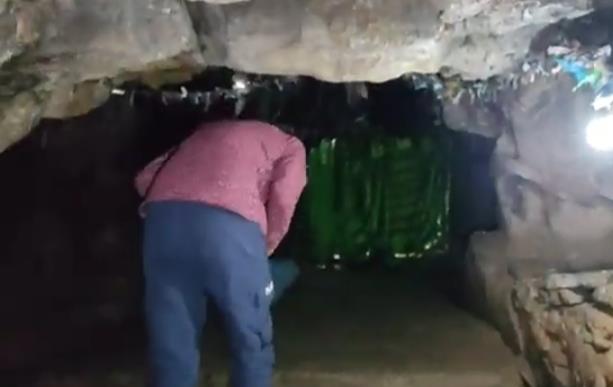
The Cave Above The Saffron Fields Of Kashmir
The Cave Above the Saffron Fields of Kashmir
By Er Aausyf ibn Farooq
In the last days of November, when the saffron fields around Pampore turn to a soft shimmer of purple and gold, Ladhoo prepares itself for a gathering that feels older than the village lanes.
The Urs of Sheikh ul Alam [R.A.] approaches, and the place begins to shift, as if stirred awake by the memory of a saint who once shaped the valley's spiritual breath.
ADVERTISEMENTSheikh ul Alam, whom many call Nund Reshi, still lives deeply in the Kashmiri mind. His sayings show up in kitchen talk, in mosque gatherings, and in the gentle advice elders give to the young. His teachings move through homes from Pulwama to Srinagar with the same ease as winter light entering a room.
People think of him less as someone from history and more as a presence that returns whenever life becomes confusing or heavy.
Ladhoo carries this presence with a special kind of care.
The cave above the village, where the saint spent twelve years in seclusion, still carries the stillness of those long hours.
Inside, a handprint rests on a stone wall. Villagers describe it as a sign of companionship, something that stands against time's slow erasure.
Visitors often pause before it, unsure whether they are looking at a relic or listening to a silence that has learned to speak.
As the Urs approaches, Ladhoo shifts into a different pace.
From 25 November onward, the evenings fill with recitations of Khatmat, Naat Khawani, and Manqabat. The voices rise without strain, settling into the night air in steady waves.
Pilgrims arrive from the south of the valley, from small hamlets beyond Shopian, from the outskirts of Srinagar, and from across Pulwama. They walk past saffron flowers set out to dry in courtyards.
The hours between the first prayer gathering and the closing moments after Isha on 28 November carry their own gentle cadence.
People sit in circles and listen. Some drift into meditative reflection, others watch the cave from below as if waiting for its stories to breathe again.
The village accepts them all with the ease of a place used to arrivals.
Saffron season deepens the sense of belonging. The land glows, and the faint smell of crocus clings to clothes and hands. The colours seem to echo the saint's teachings: soft, steady, and shaped by patience.
The shrine's steps fill through the day, and the evenings open like slow petals, offering space for prayer, memory, and silent connection.
For many who come, the trip to Ladhoo is less a religious obligation and more a return to a path that feels familiar.
They speak of the saint as though he remains among them, guiding their thoughts and steadying their uncertainties.
By the time the last gathering ends, Ladhoo settles back into its usual pace.

Legal Disclaimer:
MENAFN provides the
information “as is” without warranty of any kind. We do not accept
any responsibility or liability for the accuracy, content, images,
videos, licenses, completeness, legality, or reliability of the information
contained in this article. If you have any complaints or copyright
issues related to this article, kindly contact the provider above.


















Comments
No comment